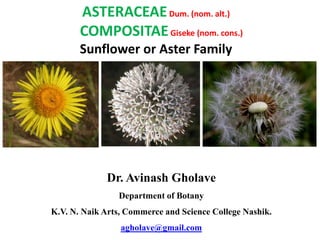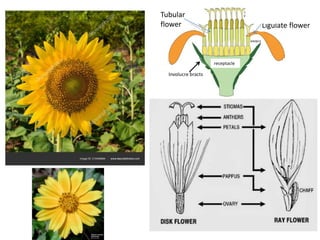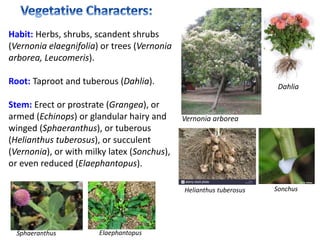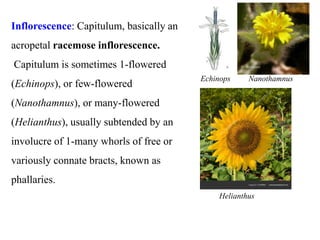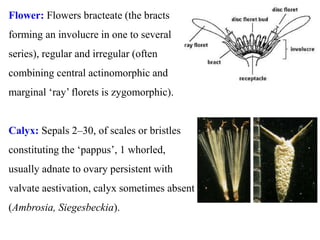This document provides information about the Asteraceae (Sunflower or Aster) family of flowering plants:
- It is the largest family of flowering plants, with over 1,500 genera and 23,000 species worldwide. India has 166 genera and 803 species.
- Plants can be herbs, shrubs, trees, with features like taproots, tubers, hairy or winged stems, alternate or opposite leaves.
- Flowers are arranged in capitula (flower heads), subtended by involucral bracts, with tubular or ligulate corollas. Stamens are syngenesious and anthers form a cylinder.
- Fruits are cy
